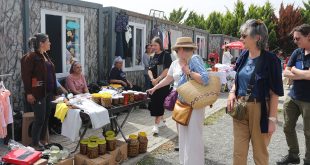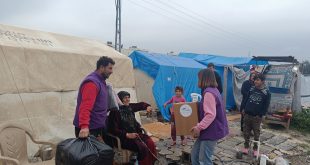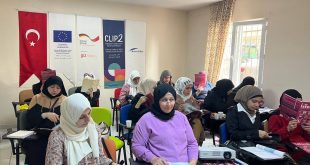How We Adapted the ToTs to Digital?
I will not forget that you gave importance to the first, not the theoretical education dimension of the event; but to emotions and skills by listening, staying neutral, conveying information correctly.
A participant from 2021 Digital ToT
Mavi Kalem ToTs are the trainings of two series of workshops named Girls’ Empowerment and Male Participation for Women’s Empowerment. We started to develop the Girls’ Empowerment Workshop Series in 2015, and over the years we have turned it into a program that we also implement in different non-governmental organizations. We started to develop the Male Participation for Women’s Empowerment Workshop Series at the end of 2018, and we implemented the series as a whole in 2019 for the first time. Mavi Kalem ToTs aim to implement and disseminate these workshop series in different institutions and organizations. With this aim, we started to develop the trainings in 2019. At the end of the same year, we made our first face-to-face applications. Due to the pandemic, we took a break in 2020 and reformatted the trainings to be applied digitally. We held the first Mavi Kalem Digital ToTs in 2021.
The Girls’ Empowerment Program and Male Participation for Women’s Empowerment Workshop Series are built on awareness. Both aim to increase the awareness of the participants, to support them to look at life from a different perspective and to rethink the basic concepts related to gender equality. In order to achieve these goals, both have adopted the approach of guiding the learning rather than teaching. We aimed to convey and develop this approach with Mavi Kalem ToTs.
In guiding the learning, there are active listening, making space for everyone to express themselves and hear each other, keeping an equal distance from different ideas and experiences. ToTs, like the workshop series it aims to disseminate, are based on this stance and approach. It aims to create a safe space where we listen to each other, learn from each other, and encourage development and improvement with implementer candidates.
We designed this space to be created in the physical environment in 2019. As we transitioned to digital in 2021, we tried to create the same safe environment, emotional and mental intimacy. The trainers of the program and the communication consultant adapted each step of the program to digital tools and rehearsed for four months. It was difficult to provide the attention provided in a physical environment in a digital environment where everything is at our fingertips. We spread the program over 5 days, lasting half a day every day, in order not to force the concentration and working conditions of the participants.
It was important to prepare the dissemination content for the announcement of the trainings, because this was not going to be a classical training. In addition to the training program for each workshop series, we prepared and shared articles titled: “What is this workshop series?”, “What kind of studies can it be used in?”, “What skills will the participants develop through practitioner training?”, “What materials will be given to the participants?” Thus, both participants and organizations applied with comprehensive knowledge of the content and contributions of the training. As a result of this dissemination method, we received an intense participation request. Among these requests, we included non-governmental workers and volunteers who met the implementing criteria of each workshop series in the training.
We did two ToTs in both workshop series, a total of 85 people attended. We had participants from all over Turkey. Some of the most instructive feedback we’ve received have been about this. Psychologists, social workers and volunteers from outside of Istanbul expressed how good it was for them to receive a training that they would not have been able to attend if it was done face-to-face. In this period when online studies, meetings and activities were intense, the trainings prepared with experiential learning methods were ‘unconventional’, ‘keeping the focus constantly on the training’ and ‘intriguing’, as the participants shared in their feedback. We ended this year’s training by aiming to continue the supervision work in 2022 in order to support the participants both in their practices and to develop the work with the experiences of different fields.
Here are a few feedbacks shared by our participants from our first digital practitioner trainings:
I have never had the opportunity to talk so much with other participants in any training.
It made me feel very good that you started from the importance of understanding and listening, that you conveyed how valuable it is to make us feel that we are understood and to put the information in that space after creating it.
As a trainer, you gave priority to teaching us that stance and behavior, we felt that way and we liked it very much.
It is really enjoyable to be together not only from a place that tells, but also by experiencing, sharing and going to small groups from time to time.
The dating activities were very meaningful, I was in a safe environment where I was not judged or threatened. A place where I can easily share my thoughts.
 Mavi Kalem Sosyal Yardımlaşma ve Dayanışma Derneği Hayata Rengini Kat!
Mavi Kalem Sosyal Yardımlaşma ve Dayanışma Derneği Hayata Rengini Kat!






